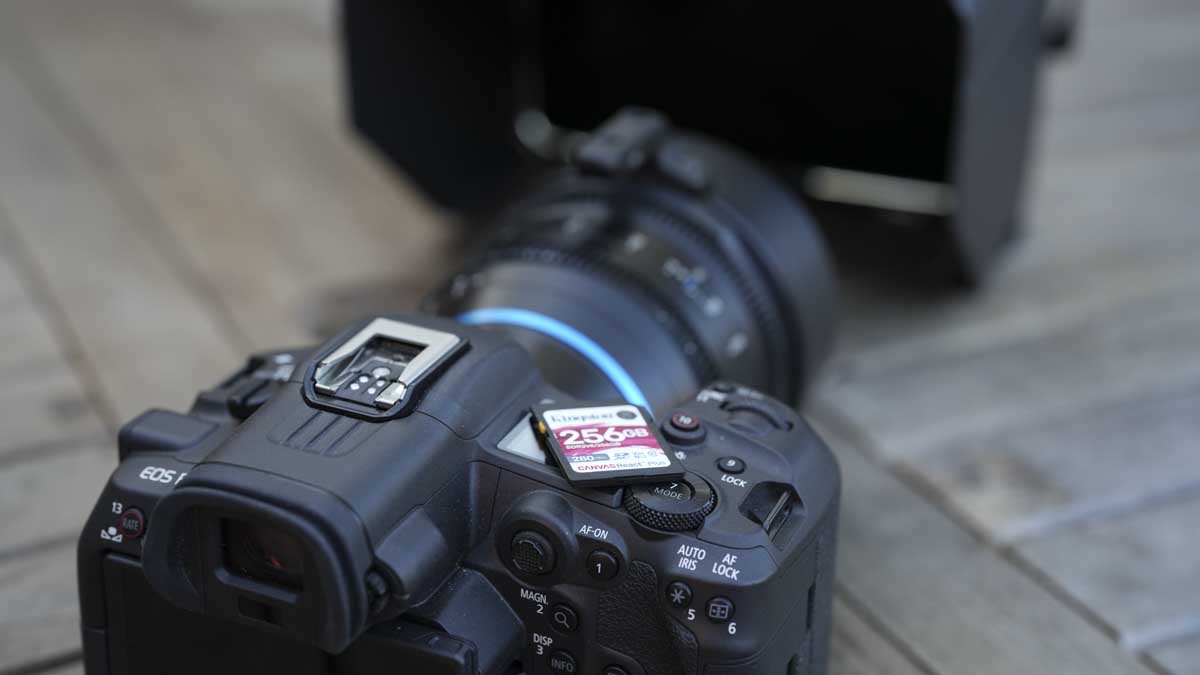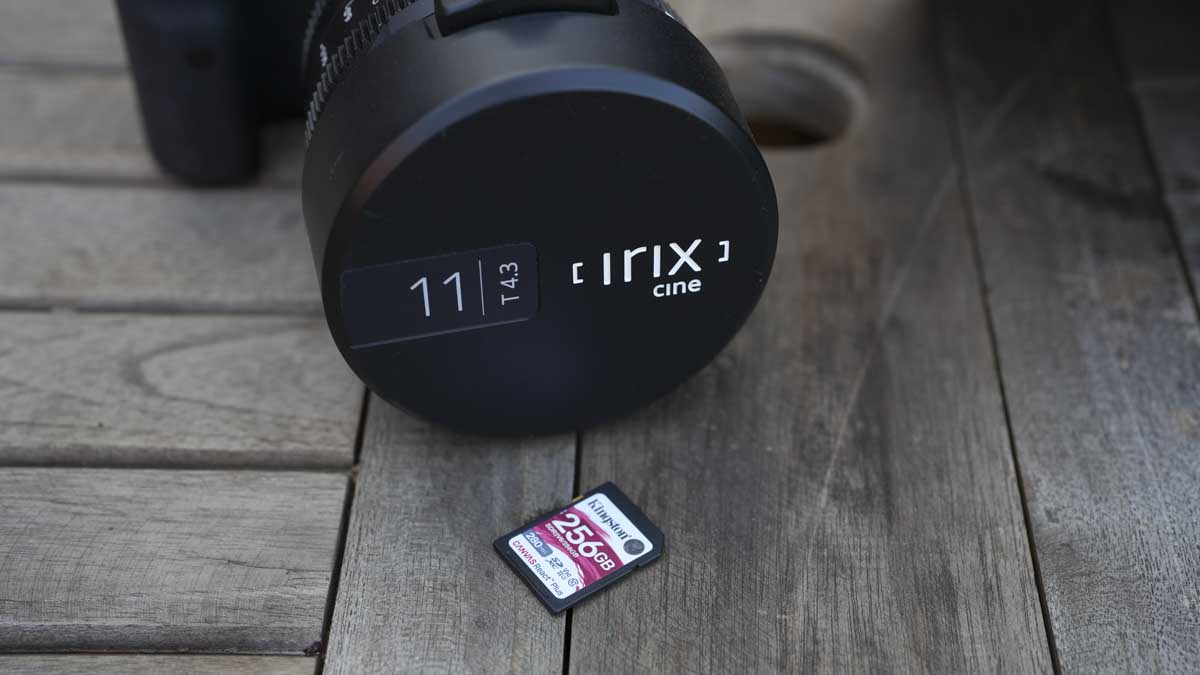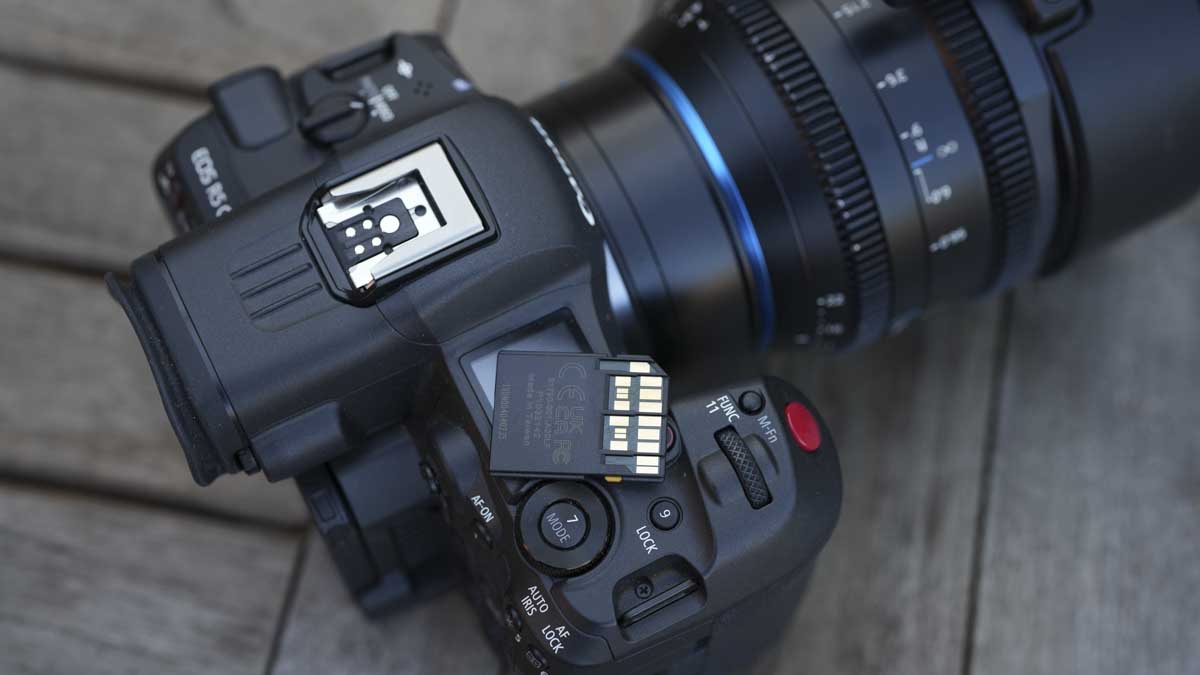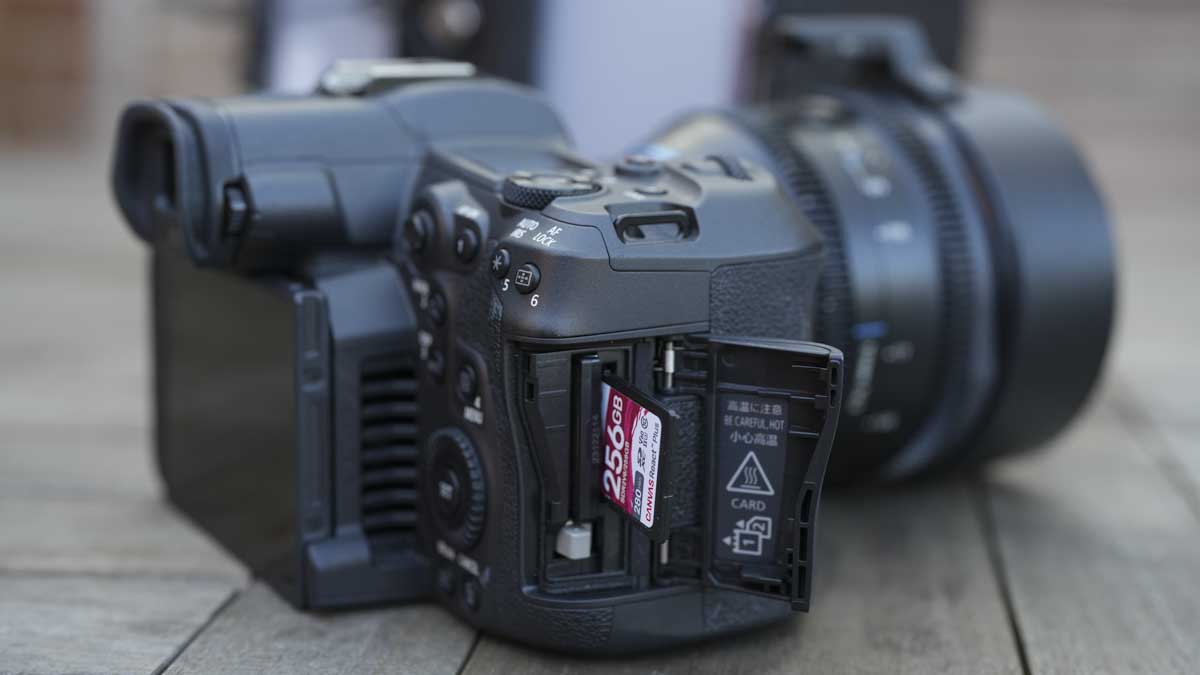Kingston Canvas React Plus V60 256GB SD Card review
Kingston Canvas React Plus V60: One-minute review
When photographers and videographers discuss memory, two brands often get instant mentions: SanDisk and Lexar. Both manufacturers produce a wide range of cards, but they also command a premium price tag. While Kingston may not be as well-known for its memory cards, the company is nonetheless a significant player. The Canvas range of cards has a solid reputation and following among professionals, especially those who work in less-than-ideal conditions.
SD cards remain the go-to choice for most photographers and videographers, although the high-resolution files produced for both video and stills are pushing the format to its limits. However, the Kingston Canvas React Plus V60 has been designed with these cameras in mind and is capable of keeping up with the write speeds required by cameras like the Canon EOS R5 C and Sony A7 IV.
We've conducted plenty of tests on the best SD cards and best microSD cards. And our speed tests here confirm Kingston's ratings. When used for professional video, the card performed flawlessly, and the 256GB of storage proved ample for small—to medium-sized shoots.
Given its performance and reliability, the Kingston Canvas React Plus V60 offers great value. If you're a professional in need of a reasonably priced SD card, this should be your first choice.
Kingston Canvas React Plus V60: Pricing & availability
- How much does it cost? Approx. $60 / £50
- When is it available? Now
- Where can you get it? It is available for sale in the US, UK and Australia
The Kingston Canvas React Plus V60 256GB SD Card is widely available in a variety of capacities, ranging from 128GB to 1TB. The V60 model is the mid-range card, while the Kingston Canvas React Plus 256GB SD Card, which has a V90 rating, is also available but commands a price four times higher.
The Kingston Canvas React Plus V60 256GB SD Card is available directly from Kingston, Amazon US and Amazon UK. and in most camera and electronics stores.
- Pricing & availability: 5/5

Kingston Canvas React Plus V60: Benchmarks
Using AJA System Test Lite, the Kingston Canvas React Plus V60 256GB SD Card achieved speeds close to those advertised by the manufacturer, with a read speed of 256MB/s and a write speed of 186MB/s. While the read speed was slightly lower than the advertised 280MB/s, the all-important write speed exceeded the quoted 150MB/s for this capacity card and sustained this speed over an hour of testing. These results demonstrate the card's ability to handle high-resolution video files as they are being captured in the camera.
- Benchmarks: 5/5

Kingston Canvas React Plus V60: Specs
Kingston Canvas React Plus V60 256GB: Build & handling
One of the great things about memory cards is that their design can stay the same can't because they need to fit into a standardized port. Indeed, the Kingston Canvas React Plus V60 256GB SD Card adheres to this standard. Tested in a MacBook Pro M1, Intel Nuc Ghost Canyon, Sony A7 IV, and Canon EOS R5 C, the card slotted into place with no issues.
The card's general construction is solid and well-made, as usual. It is formed from plastic, with the delicate electronics safely encased inside. On the exterior, there's just the Kingston label with the 256GB capacity emblazoned on the front. This is quite handy for quickly verifying that you have grabbed the correct capacity card, but aside from aesthetics, it serves little other purpose. The days of leaving a strip to mark on details or contact information have long since passed.
On the back are the two lines of contacts that signify this is the faster UHS-II generation of SD cards. Other than that, the Kingston Canvas React Plus V60 256GB appears on the surface to be a standard SD card.

Kingston Canvas React Plus V60: Features
The Kingston Canvas React Plus V60 card balances performance, capacity, and price, aimed at professional photographers and videographers. The range also features a V90 class card, which offers a significant increase in write performance—almost double that of the V60 card—but this comes at a considerable financial cost, almost four times the price.
In reality, the V60 is likely to meet the needs of most photographers, with UHS-II technology enabling the older Speed Class 3 (U3) classification and the newer Video Speed Class 60 (V60). This will satisfy the demands of all photographers and the majority of mirrorless and DSLR shooters whose cameras are compatible with SD cards.
The card's UHS-II technology allows for write speeds of up to 280MB/s in ideal conditions, which is more than sufficient for most off-the-shelf cameras when shooting 4K video or capturing high-resolution images in burst modes. Most cameras that require higher data writing speeds than this also offer the newer CFExpress cards for that purpose.
While the advent of high-capacity cameras is welcome, they do impose additional demands on storage. Here, the 256GB capacity offers a good middle ground, with smaller and larger capacity cards available to suit your needs.
- Features: 5/5
Kingston Canvas React Plus V60: Performance

The Kingston Canvas React Plus V60 256GB SD Card is marketed as a high-performance option designed for professional photographers and videographers. To assess its performance, it was tested in capturing both video and stills with the Canon EOS R5 C and Sony A7 IV. Additionally, a variety of benchmarking tools were used to measure the read and write speeds and to evaluate performance consistency under sustained use.
In practical camera use, the Kingston Canvas React Plus proved to be an ideal partner for high-resolution cameras like the Canon EOS R5 C and Sony A7 IV. The card supported burst shooting modes and handled the high data storage demands required when recording 4K video directly in-camera, without the need for an external recorder. The write speeds were reliable during several days of shooting with both cameras. Post-shoot, the files were transferred to an OWC drive, and the card's high read speeds enabled fast file transfers.
In real-world tests, the card performed exceptionally well, meeting the demands of the cameras and facilitating speedy downloads at the end of the shoot. Switching to benchmark tests, the results in the field were confirmed by software-based assessments.
The AJA System Test reported read speeds of up to 256 MB/s and write speeds of 186 MB/s. The CrystalDiskMark test further demonstrated the card's capabilities, with impressive read speeds of 268.68 MB/s and even higher write speeds of 296.29 MB/s. The ATTO Disk Benchmark showed read speeds peaking at 243.20 MB/s and write speeds at 189.02 MB/s, reflecting consistent performance that aligns with the needs of continuous high-resolution image capturing and video recording. Finally, the AS SSD Benchmark confirmed these results with read speeds of 241.31 MB/s and write speeds of 185.48 MB/s, reinforcing the abilities of this card.
- Performance: 5/5
Should I buy the Kingston Canvas React Plus V60 256GB?
The Kingston Canvas React Plus V60 256GB demonstrates excellent performance that will meet the demands of professional photographers and videographers. Its performance in the real world and benchmark tests show its capabilities in handling large files and frequent write cycles, making it an excellent choice for anyone looking for reliability and speed in an SD card.
How I tested the Kingston Canvas React Plus V60 256GB
For this test the card was used in several different devices all of which support the exFAT but with a focus on use in the Sony A7 IV and Canon EOS R5 C. Before starting this test the card was reformated to give the greatest compatibility for the real world tests and also for testing through the benchmarking software.
The softare used included the latest versions of CrystalDiskMark, Atto, AS SSD and AJA benchmarks, noting the best scores achieved in each. They are all free and can be downloaded by anyone. After the standard benchmarks I then use the card in a variety of tech, including as previously mentioned the Sony A7 IV and Canon EOS R5 C to ensure compatibility and performance over a sustained period. I then transfer a folder of files, roughly 10GB in size, to get a rough idea of real-life performance.
0 comments:
Post a Comment